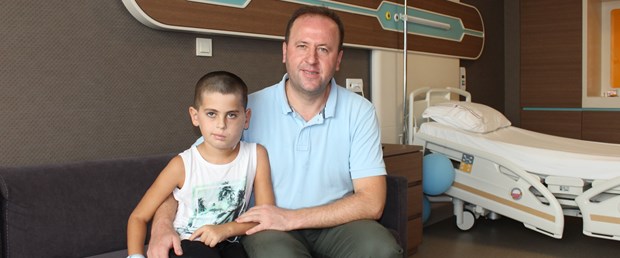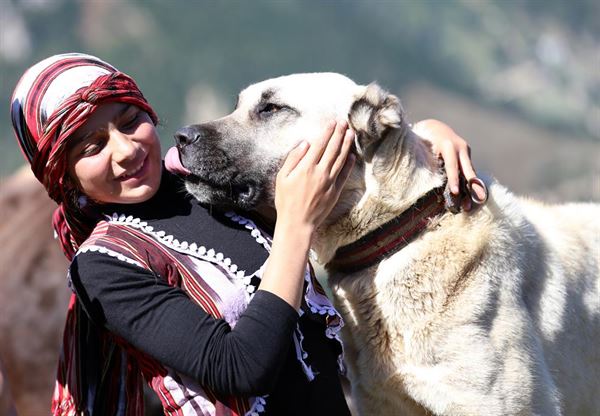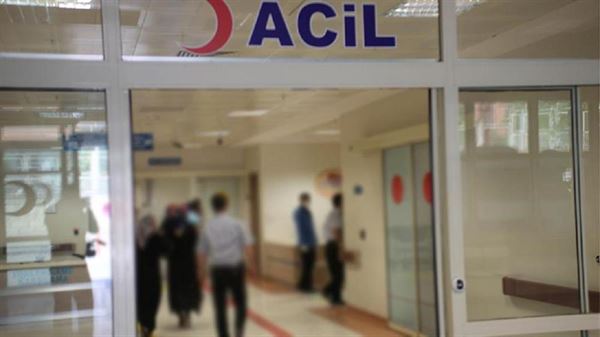Fall Bed 10 sickness didem seymen Health News Date of entry: 9.10.2017 sudden heat changes are causing diseases by weakening immune system. Early non-intervention diseases can cause more serious problems such as pneumonia, nasal discharge, high fever, cold, headache, muscle joint pain... With arrival of autumn, almost everyone is already suffering from such problems. The reason for this is that sudden heat changes in autumn, reducing resistance of immune system, inviting infections to infectious diseases or vice versa due to excessive strong immunity to emergence of allergic diseases more often this season. Acıbadem Mehmet Ali Intellectuals University Atakent Hospital internal medicine specialist Dr. Aytaç Karadag, as wear began to cool, we spent more time in crowded and closed spaces rapidly spreading viruses, cough, sneeze or It can be easily transmitted through droplets: "In fact, it is possible to spend autumn, even winter season without getting sick." So, what are illnesses waiting for us in fall? What precautions should we take to protect m from se diseases? Internal medicine specialist Dr. Aytaç Karadag told... 1) flu: The flu begins with a slight nasal discharge, rarely watching height of fever and slight cough. Many viruses can make colds by infecting m with a droplet infection. Bed rest and plenty of fluids are passing by itself. The flu is usually mixed with a gray. But higher fire, resentment, muscle pain, weakness is more pronounced. The flu can lower enough patients to require absolute bed rest. 2) flu (influenza): The end of December is a highly contagious and heavily-watched disease that plagues bed in early January. Over 39 degrees of fever, chills, chills, headaches, muscle-joint pain in whole body and a dry cough are watching. Especially in children, abdominal pain, mild nausea can do. Elderly children can cause pneumonia by going down lower respiratory tract with chronic illness. In September, October or November, vaccine is applied to influenza virus, which causes this disease to happen once a year. Flu vaccine is recommended especially for elderly, children, patients who are quickly ill-advised, asthma, COPD, diabetes, kidney, heart patients, nursing home, nursery, school, hospital, etc. 3) bronchitis: The respiratory tubes in lung called bronchi are mostly viral, infrequently bacterial or allergic to disease. Fever height, weakness, body pain. But real symptom is; Stubborn, overlapping cough attacks. This cough is usually not accompanied by phlegm; Sometimes wheezing, shortness of breath can be with cough. When se complaints are developed, physician must be consulted. Because treatment needs to be treated appropriately by separating microbic bronchiite with allergic bronchitis which is completely different from each or. 4) pneumonia (pneumonia): The lung tissue is commonly reported as a highly hazardous infection, which is often composed of bacterial, rarely viral and chemical substances. Fever height, cough, dark sputum, shortness of breath, pain in back-chest area arises from weakness problems. There is no need for bed rest, hospital hospitalization and proper medical treatment in some special cases. 5) oti tis (middle ear inflammation): inflammation of middle ear and ear membrane, which is common in childhood, is bacterial origin. It must be applied to antibiotic treatment. Insufficient treatment; Chronic otitis can cause meningitis, eardrum rupture, sinusitis and hearing impairment. 6) pharyngitis (angina): sore throats, throat drying, difficulty in swallowing, fever height, chills, tremors, sweating, 75 percent of inflammation of throat, which is viral-induced. After examination, if doctor deems it necessary, it is possible to start antibiotic rapy in case of blood examination or throat testing, because 25 percent is bacterial. 7) tonsillite (tonsil): Swelling of tonsils on right and left side of throat, difficulty in swallowing, sore throat, swelling of neck lymph, which is usually bacterial, because of antibiotic-borne A disease that may require use. Especially if re are white plaques over tonsils, it accelerates healing of early treatment by getting to doctor quickly without wasting time. 8) sinusitis: Forehead Middle line, sensation of fullness over cheekbones and around eyes, headache, fever, runny nose, nasal obstruction, use of antibiotics because it is generally bacterial origin that is characterized by geniz discharge The inflammatory disease of sinus in bones of head region. In case of insufficient eaves, it can cause a headache, moderate ear inflammation and meningitis. 9) meningitis: A dangerous illness requiring hospital sleep and strict follow-up. Microorganisms commonly transmitted by droplet infection; When not adequately cured, it can lead to meningitis, which is inflammation of brain membrane. Except for a few exceptional cases like tuberculosis meningitis, it usually goes without a disability. 10) hay fever (allergic colds): It is seen during spring and autumn months depending on allergies. It shows itself with complaints such as runny nose, sneezing, itching at tip of nose, aging in eyes, dry cough and shortness of breath. In case of allergic colds with no infectious properties, it is very important to pay attention to preventive measures because patients are more easily captured and healed in respiratory tract infections later. These precautions are protected from illness Beware of Hygiene: The best and most effective preventive precaution is to wash hands with soap and plenty of water. Attention; Hand sanitizers, gels and alcohol-based products can clog skin as it does not kill disease-maker germs. If you are entering a risky group, you must have a flu vaccine once a year in September, October or November, and a pneumonia vaccine in five years. In crowded and stuffy environments, viruses can easily infect. Therefore do not forget to ventilate your house hourly, averaging five minutes. If you have a Risk factor, do not engage in crowded environments such as mass transit during outbreaks. Wear a mask when you have to enter a crowded environment. balanced and adequate feed: If protein, carbohydrates, fats and vitamins that body needs are not adequately taken, body resistance falls. Therefore, do not forget to supplement m with food from natural means if you have a deficiency of iron with zinc and vitamin D, especially strengning immune system. 90 percent of vitamin D can be supplied with sun rays and 10 percent of foods such as fish, liver and spleen. Do not forget to regularly eat foods such as red meat, nuts, peas, bamboo, spinach, as anemia does frequent recurrent infections due to weakening of immune system. Walk every day 40 minutes: Make your immune system stronger by walking in open air four days a week or 40 minutes every day. regular and high quality sleep: Less than six to eight hours a day is very important for your immune system to work regularly.
İstanbul 17°
DOLLAR 3.6797
EURO 4.3436
GOLD 152.814
BIST 103394
10 diseases that fall to bed in autumn
Sudden heat changes are causing diseases by weakening the immune system. Early non-intervention diseases are more serious problems such as pneumonia...
09 October 2017 Monday 02:05 - 7 reads.

 The vehicle that entered the truck was caught in flames: 2 dead
The vehicle that entered the truck was caught in flames: 2 dead Description of Turkish Airlines (what will be the status of the ticket fields?)
Description of Turkish Airlines (what will be the status of the ticket fields?) The dollar came over 3.70 TL with a dry visa crisis, hard decline in the stock market (how much is the dollar?)
The dollar came over 3.70 TL with a dry visa crisis, hard decline in the stock market (how much is the dollar?) TSK explained: Turkish military in Idlib
TSK explained: Turkish military in Idlib ' The Turkish stamp on Anuga
' The Turkish stamp on Anuga Turkish Airlines has made an announcement about the US flights
Turkish Airlines has made an announcement about the US flights The importance of the United States cannot be compared to other countries
The importance of the United States cannot be compared to other countries A fake teacher scandal in Trabzon
A fake teacher scandal in Trabzon Free face-to-side lessons are starting in açunfaculty
Free face-to-side lessons are starting in açunfaculty Minister Concise: Now our universities can establish a technology transfer company
Minister Concise: Now our universities can establish a technology transfer company New era in the Waste Battery collection campaign in schools
New era in the Waste Battery collection campaign in schools Theatre: The artist, the revelation with her science fiction piece
Theatre: The artist, the revelation with her science fiction piece CharlElie Couture returns to "Scout"
CharlElie Couture returns to "Scout" A virtual work by Jeff Koons vandalized ... virtually
A virtual work by Jeff Koons vandalized ... virtually Theatre: Course on the 25th century with the
Theatre: Course on the 25th century with the 8-year-old patient with 7 cm tumor output from the skull
8-year-old patient with 7 cm tumor output from the skull Special Concert for the disabled at the Nemrut summit
Special Concert for the disabled at the Nemrut summit The Ted AVII repayment of SMA patients was covered (Eskisehir)
The Ted AVII repayment of SMA patients was covered (Eskisehir) Health Minister died running for health
Health Minister died running for health Hamdu Sena wants to be minister
Hamdu Sena wants to be minister 3 tourists killed in the accident tour minibus driver arrested
3 tourists killed in the accident tour minibus driver arrested Airport employee falls to heart of young girl
Airport employee falls to heart of young girl They adorn the city walls
They adorn the city walls A hundred politicians and intellectuals reject mediation
A hundred politicians and intellectuals reject mediation Government studies combining article 155 with extraordinary measures
Government studies combining article 155 with extraordinary measures The Catalan government's road map: "Generating conflict and forcible disconnection"
The Catalan government's road map: "Generating conflict and forcible disconnection" Besiktas, Şenol lives the most ' vicious ' season in the Sun management
Besiktas, Şenol lives the most ' vicious ' season in the Sun management Basketball in the European league record Real Madrid
Basketball in the European league record Real Madrid Fenerbahce's fate is tied to ' yellow-red '!
Fenerbahce's fate is tied to ' yellow-red '! Juventus, C & #x27; è also Dybala among the 30 candidates for the ball D & #x27; gold
Juventus, C & #x27; è also Dybala among the 30 candidates for the ball D & #x27; gold How durable is the Nokia 8 shocks? You must watch!
How durable is the Nokia 8 shocks? You must watch! Those who use Chrome are good news! A nightmare is ending
Those who use Chrome are good news! A nightmare is ending Windows Phone is coming to the end of the road, a revolution is closing!
Windows Phone is coming to the end of the road, a revolution is closing! 3 new features on the IPhone camera that will make your face smile
3 new features on the IPhone camera that will make your face smile






























